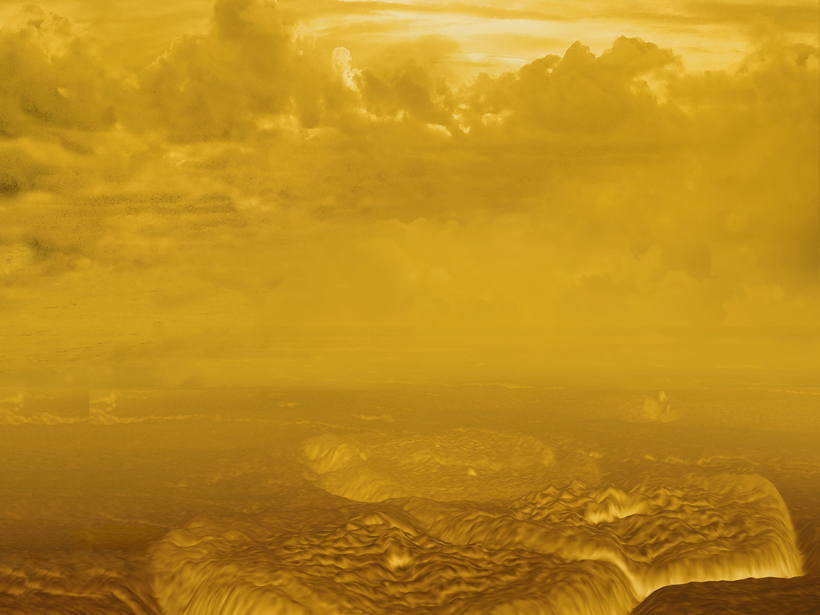A good way to understand our climate is to see how it compares to the climate of other planets. For example, what caused the differences in the climate histories of Earth, Mars, and Venus? And what do these differences tell us about the potential climates of terrestrial planets around other stars? Such cross-disciplinary conversations are important to a growing area of research known as comparative climatology.
A meeting, held at NASA Ames Research Center, brought together researchers from around the world who study terrestrial climate from a variety of perspectives, including Earth’s climate history and future, the climates of planets found in our solar system, interactions of the Sun with its planets, and the diversity of exoplanet climates.
We should leverage lessons learned from all planets, regardless of the artificial barriers set up by our often stovepiped funding sources.
The primary take-home points from this meeting were that the climate of terrestrial worlds is a function of the intersections of surface, interior, space, and life processes and that to best understand these intersections, we should leverage lessons learned from all these planets, regardless of the artificial barriers set up by our often stovepiped funding sources.
The meeting opened with discussions on the stability of different climatic states, a factor important to the study of known terrestrial worlds—such as Earth, Titan, Mars, and Venus—as well as theoretical or as yet unobserved worlds such as “Dune-like” planets or those with moist greenhouses.
The conversation on climate stability led to detailed discussions of the different system components that constitute planetary climate. For example, meeting participants weighed the influence of mass exchange with the subsurface and stellar-driven mass loss at the top of the atmosphere. Attendees also discussed comparing atmospheric dynamics, how these dynamics affect other processes (such as cloud formation, dust uptake, and weather), and general interactions of the atmosphere with the cryosphere, biosphere, and oceans.
The observations of myriad climate systems—including the Mars Atmosphere and Volatile Evolution (MAVEN) mission, Kepler, the Ionospheric Connection Explorer (ICON), and many other missions—will help advance the theoretical tools that scientists develop to simulate climate dynamical processes. At the meeting, participants demonstrated how a variety of climate models could reproduce detailed observations of worlds in and beyond our solar system.
Discussion on infrastructure focused on how planetary scientists can do a better job to welcome and include Earth scientists in future endeavors.
The meeting closed with thoughts about future missions, observational data that the field still requires, and the community infrastructure needed to support those observations. Participants discussed, for example, an Earth climate-observing system, the future of exoplanet climate observations, and a coordinated set of planetary climate observations and intermodel comparisons. The discussion on infrastructure focused on how planetary scientists can do a better job to welcome and include Earth scientists in future endeavors and how to create the community needed to compare results across different targets, thereby improving assessments of them.
The CCTP2 website hosts an archive of the abstracts, talks, and panel discussions from the meeting; the same site will also host future long-form abstracts and discussion summaries. Plans are underway for a third CCTP meeting, likely to be held in summer 2017.
—Shawn D. Domagal-Goldman, NASA Goddard Space Flight Center, Greenbelt, Md.; email: [email protected]; Jeffrey Hollingsworth, Ames Research Center, NASA, Moffett Field, Calif.; and Lori Glaze, NASA Goddard Space Flight Center, Greenbelt, Md.
Citation: Domagal-Goldman, S. D. and J. Hollingsworth (2016), Comparing planetary climates to investigate climate systems, Eos, 97, doi:10.1029/2016EO048087. Published on 18 March 2016.
Text not subject to copyright.
Except where otherwise noted, images are subject to copyright. Any reuse without express permission from the copyright owner is prohibited.
Text not subject to copyright.
Except where otherwise noted, images are subject to copyright. Any reuse without express permission from the copyright owner is prohibited.

